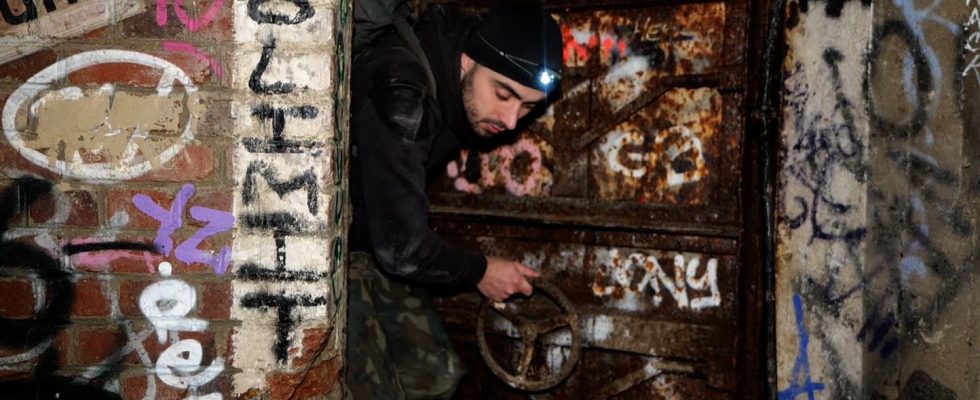20 meters underground, under the Montaigne high school in the 6th arrondissement of Paris, there is a remarkable vestige of the Second World War: a German bunker. Axel, adventurer and videographerguided 20 minutes through a maze of complex tunnels to discover this historical testimony.
Access to the bunker is not without challenges: narrow passages, flooded areas… After a 1h30 walk, a rusty armored door finally shows us the entrance to the shelter.
Chemical toilets and graffiti
As soon as we arrive, signs of the past appear. “We can see, hanging on the wall, the old electrical box from the time. You have to imagine that before, there were lots of electrical cables on the ceiling,” analyzes Axel.
Behind another door are the chemical toilets used by the Germans during the Occupation. And on the walls, between the graffiti left by curious explorers of the Parisian underground, a few inscriptions take us back more than 80 years. “Here we have an inscription in German which means “no smoking”. We also find the old marks indicating the different emergency exits. »
The story behind the walls
But what do these walls tell us? In 1940, during the German Occupation of Paris, a wave of requisitions fell on the city, affecting buildings deemed essential such as administrative centers and hospitals.
“When the Germans arrived in Paris, they requisitioned the Senate in the 6th arrondissement and, at the same time, took possession of the Lycée Montaigne, located just opposite,” explains Gilles Thomas, independent researcher specializing in the history of basements. Parisians.
In September 1940, the high school and its gas-tight shelter were requisitioned for soldiers of the Luftwaffe, the German air force. “At that time, the school population was forced to move and continued their lessons at the Feuillantines school, further away. »
Deteriorated traces of the past
However, today, the traces left by the Germans have largely deteriorated. According to Gilles Thomas, most of the remains were covered with paint. “In this shelter, there was a wall covered with warning dates, where people went underground to take shelter. It included the date, start and end time of the alert. But today, this wall has been repainted white and a large fresco has been drawn there,” laments the researcher.
Although underground quarries are often the scene of unusual parties, access to them remains illegal. Despite this ban, they are frequently visited by people who do not hesitate to degrade the last vestiges of the war.

